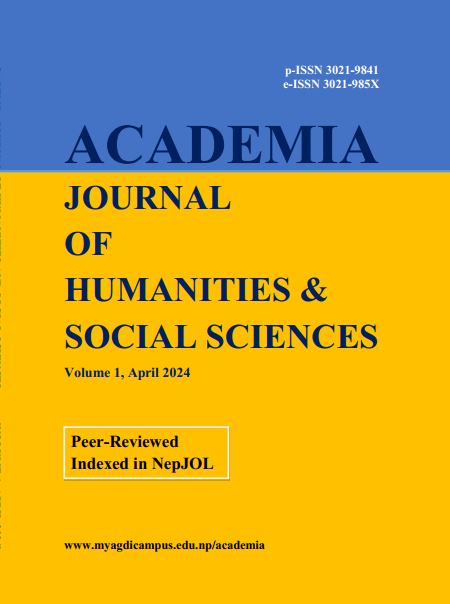Traumatic Testimony of a Child in Vikal’s “A Pair of Innocent Eyes”: The Conflict Perspective on the Insurgency
DOI:
https://doi.org/10.3126/ajhss.v1i1.65004Keywords:
Traumatic testimony, internal conflict, Maoist insurgency in Nepal, Comprehensive Peace TreatyAbstract
This paper has analyzed Ramesh Vikal’s “A Pair of Innocent Eyes,” a story written on the background of ten-year-long Maoist insurgency by applying trauma theory. The paper attempts to find out how the narrator while presenting his or her traumatic testimony about a horrible event narrates it: either objectively elucidating all the incidents neutrally or demonizing some particular aspect, which is supposed to have created all the consequences of the nation-state that remained in chaos for more than a decade. If the testimony of historical events is narrated idealizing one and demonizing another group, it, later on, cannot be accepted as an authentic testimony and the condition of the victims of the events would be more aggravated as it cannot appease their tension. The ten-year-long insurgency has not only brought some great change in the nation-state, but it also has helped people narrativize the incidents from one angle which subsequently worsen the situation and the nation-state can delve into internal conflict once again after the most awaited comprehensive peace treaty between the rebel and the government.
Downloads
Downloads
Published
How to Cite
Issue
Section
License
Copyright (c) 2024 The Author(s)

This work is licensed under a Creative Commons Attribution 4.0 International License.




